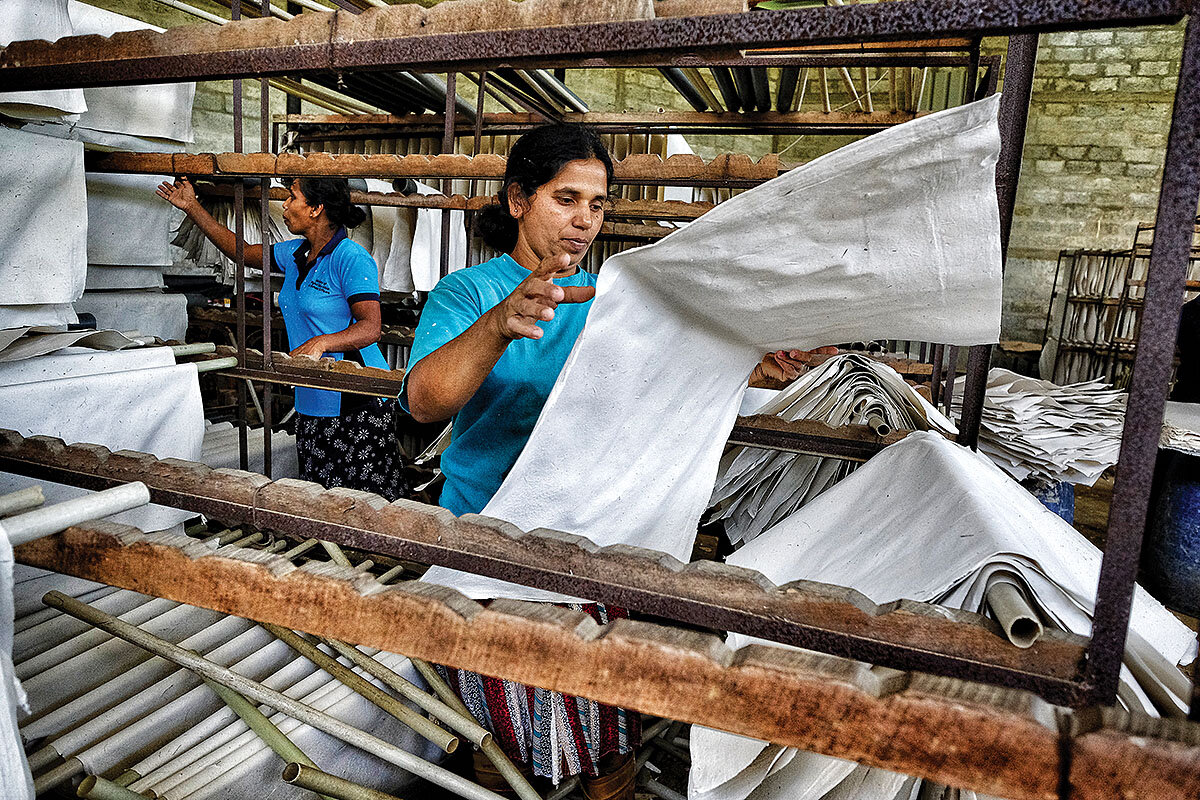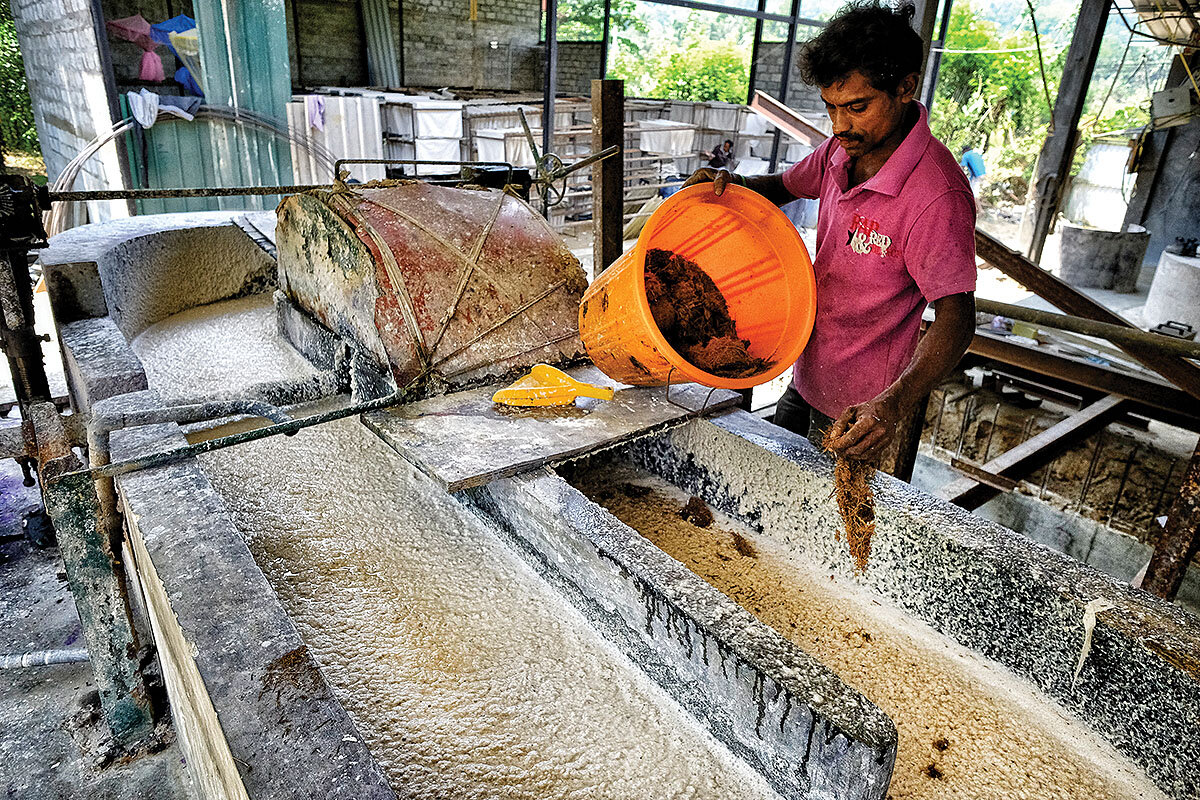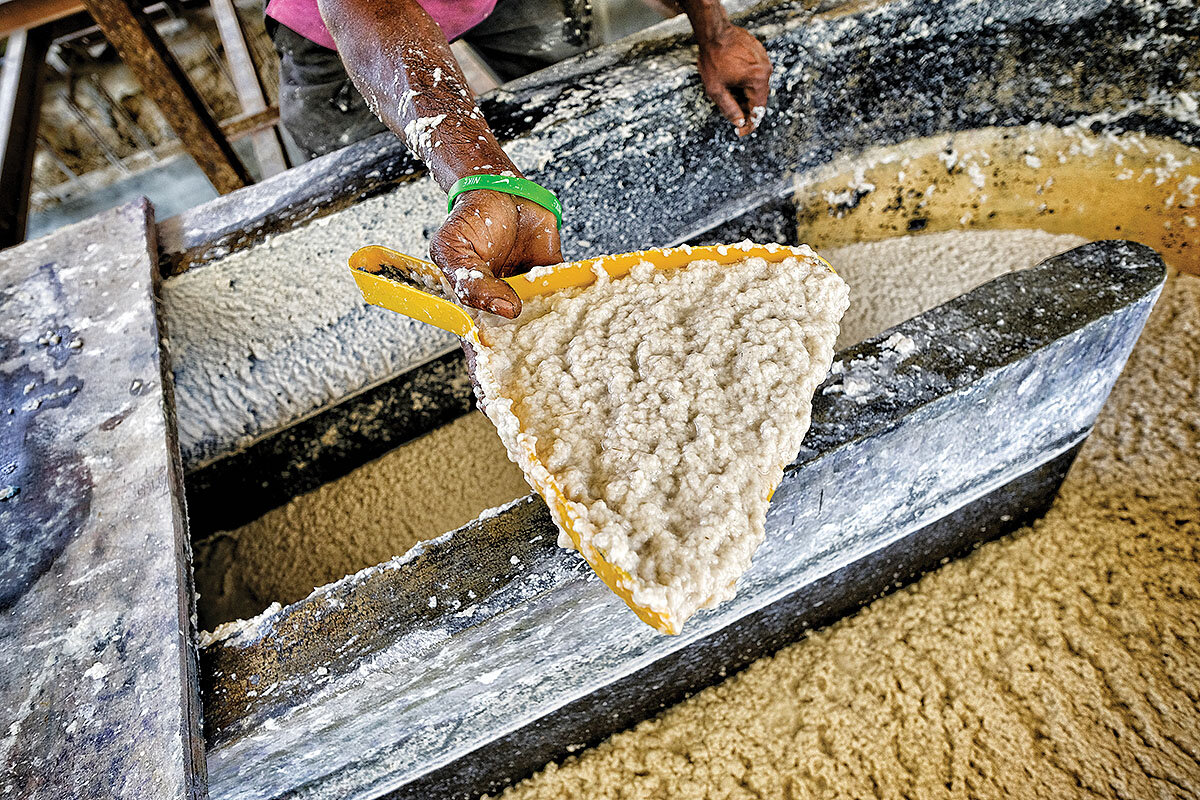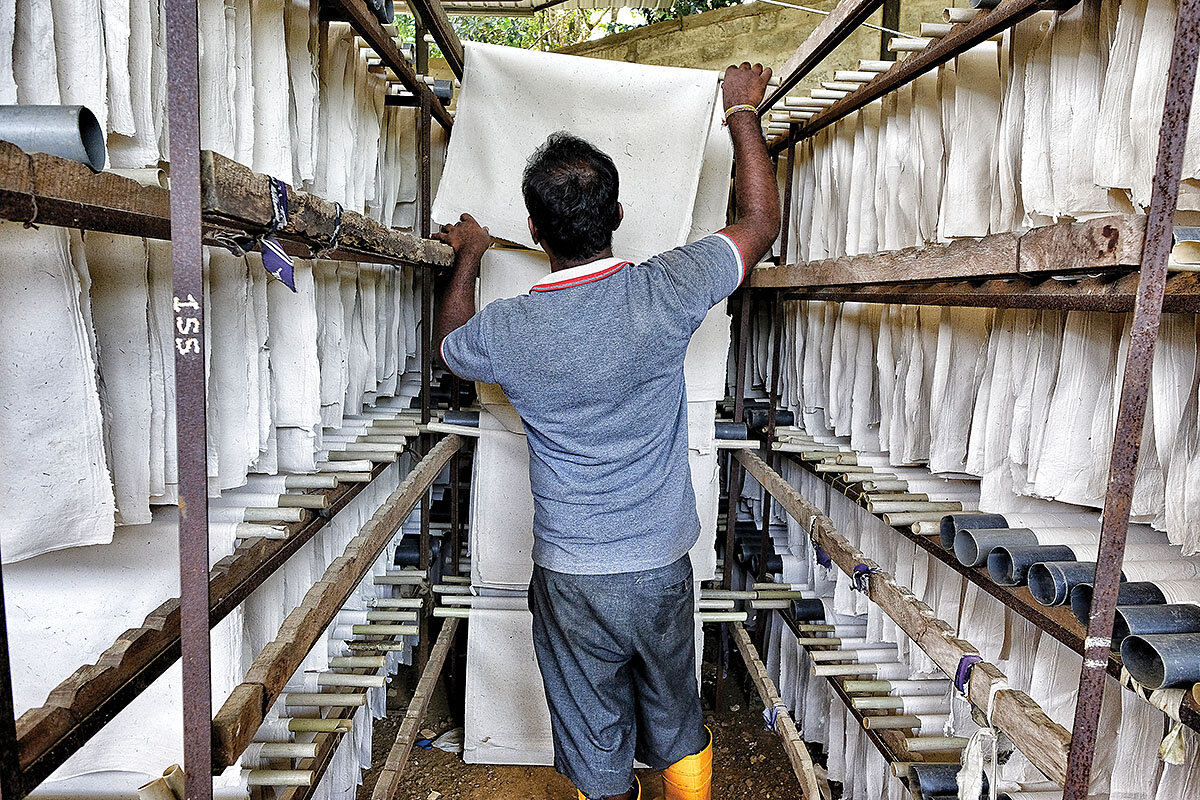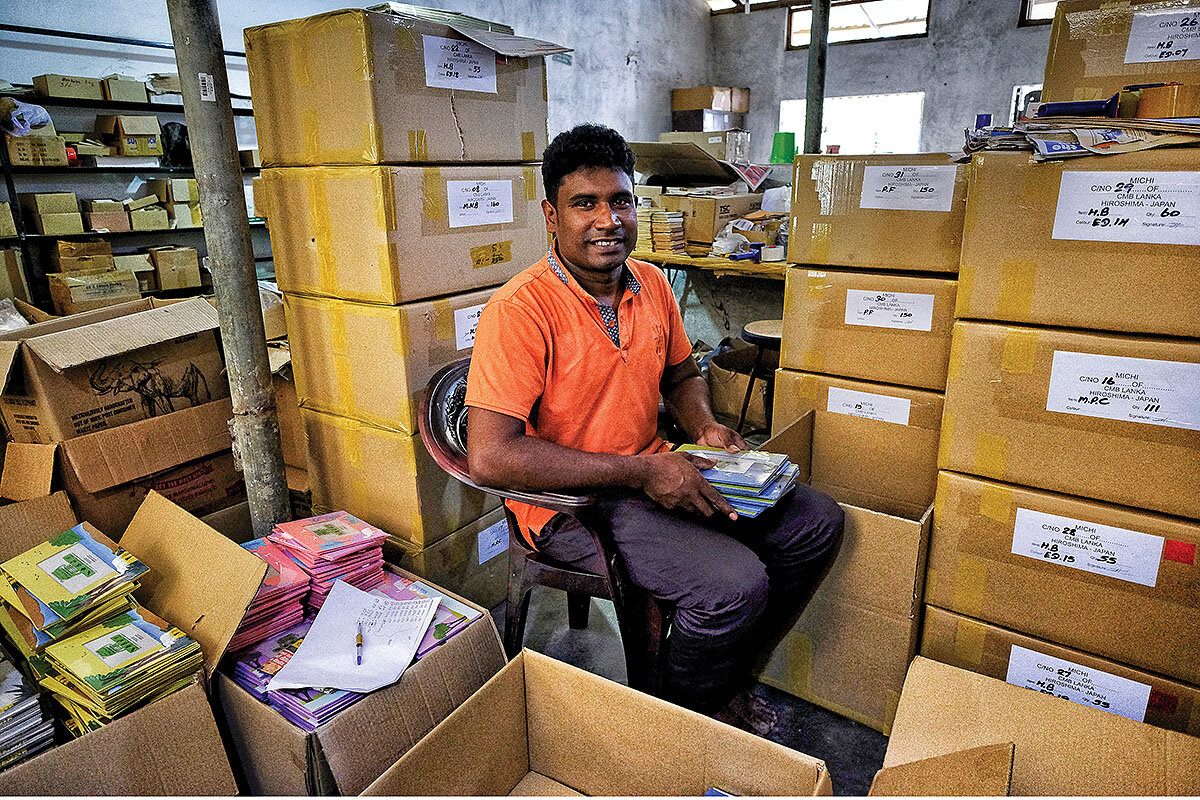In Pictures: Where elephants help make paper
Loading...
| Kegalle, Sri Lanka
For three generations, Thusitha Ranasinghe’s family navigated the world of international paper imports. But 24 years ago, the Sri Lankan printer had a revolutionary idea. What if he made his own paper with an ecologically friendly process that used local fibers? His choice of source material drew skepticism from others in his community. He planned to craft the paper out of elephant dung.
The idea turned out to be far from absurd.
In a country with 2,500-4,000 wild elephants, there is no shortage of droppings. And due to the pachyderm’s incomplete digestive system, the heaps of waste contain a high percentage of intact fibers, making it a perfect raw material for paper production. What’s more, the idea also managed to ease some of the conflict between elephants and locals by creating employment opportunities in rural areas and shifting local perceptions of elephants as a threat.
Since launching Eco Maximus in 1997 with seven workers and a small factory in Kegalle, Mr. Ranasinghe now employs more than 120 people in various locations throughout the country.
The company sources its dung from the Millennium Elephant Foundation, a nongovernmental organization dedicated to improving the well-being of domestic elephants. Each day, foundation volunteers arrive at the company’s factory door with four wheelbarrows full of fresh dung, and from there, the recycling paper process begins.



